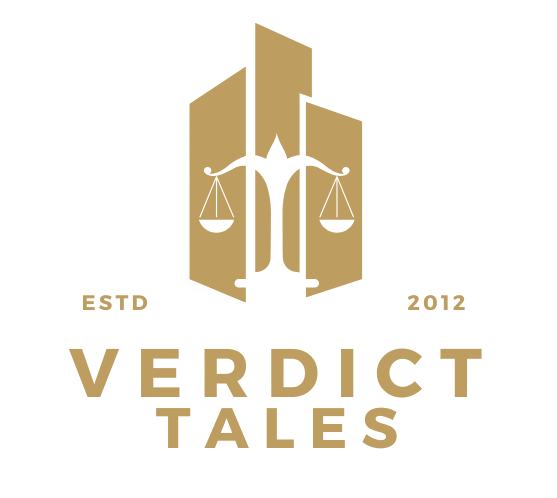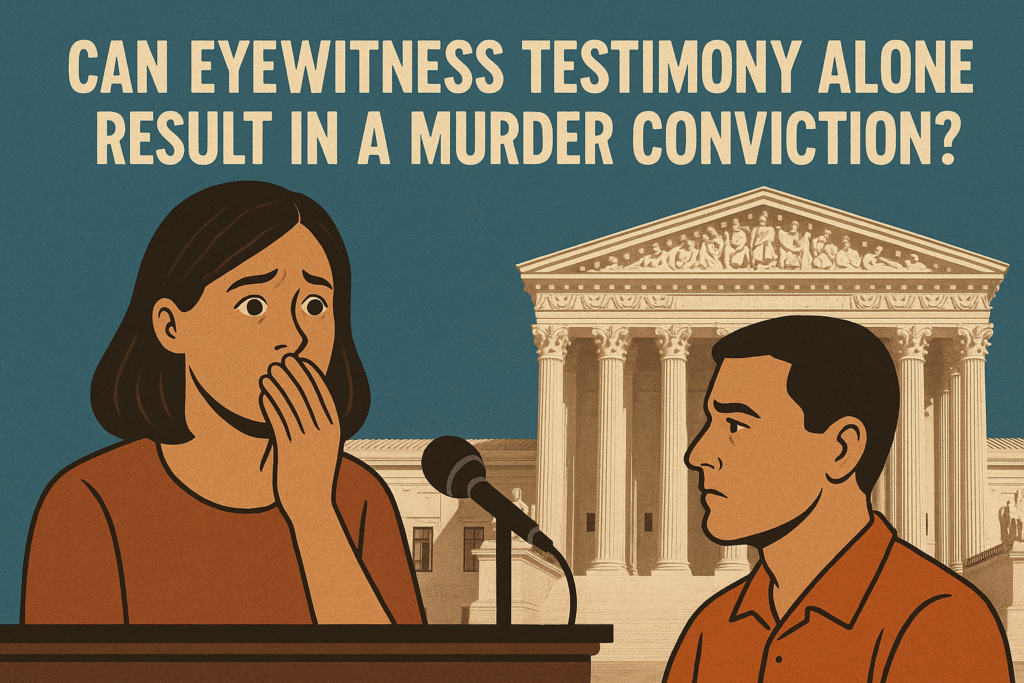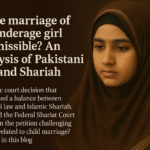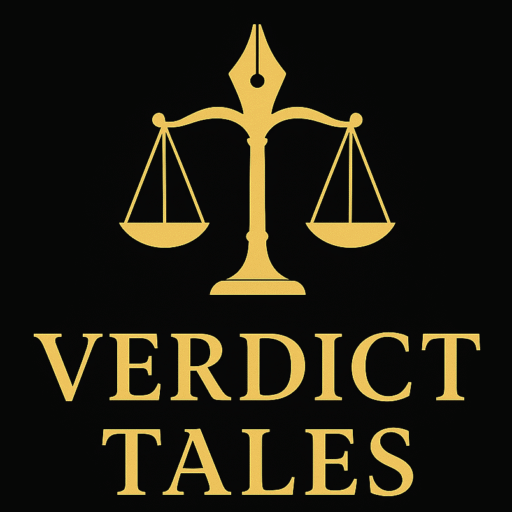Emphasizing that unreliable eyewitness testimony and uncorroborated evidence cannot support a guilty verdict, Pakistan’s Supreme Court reversed a murder conviction in the 2025 court ruling of Khizar Hayat v. The State. This court decision emphasizes the important need for consistent evidence in the judicial system and provides lessons on doubt and fairness.
On a cool November night in 2009, a violent occurrence broke the serenity in the quiet, rural area of Kabirwala, District Khanewal. From a small-town police station to the Supreme Court in Islamabad, local man Khizar Hayat found himself at the center of a murder case that would run through Pakistan’s legal system. Hayat’s fate rested on the testimony of three eyewitnesses and a prosecution riddled with contradictions, accused of savagely killing Ghulam Rasool and wounding Abid Hussain. Does eyewitness evidence by itself guarantee a murder conviction? This riveting story of justice, uncertainty, and a search for truth resonates with that issue.
Background of the Case
On November 30, 2009, at 9:00 p.m., anarchy tore through the peacefulness of Haveli Karanga, a Tehsil Kabirwala village. The prosecution claims that Khizar Hayat and his friends ambushed local Ghulam Rasool in a lethal attack. The driving force? The prosecution alleged Hayat’s group kidnapped the complainant’s daughter, Mst. Nasreen, starting a very personal vendetta that resulted in murder. Ghulam Rasool died; another villager, Abid Hussain, was left injured with head and shoulder injuries. The prosecution depicted the incident as a cold-blooded act of vengeance carried out under cover of darkness.
Muhammad Ramzan, the complainant, reported the event to the police but not until the following day, December 1, 2009, at 1:05 p.m.—a delay of 14 hours that would subsequently plague the case. The First Information Report (FIR No. 240/2009) identified five others—Amir Shehzad, Sadar Ayub, Maqbool Hussain, Muhammad Yaqoob, and Asif Iqbal—as the offenders together with Khizar Hayat. Hayat and Amir Shehzad were accused of giving Ghulam Rasool the lethal blows; Sadar Ayub supposedly attacked Abid Hussain with a hatchet. The others were charged with being there but not with actually causing injury.
Under Section 301(b) of the Pakistan Penal Code (PPC), the allegation was severe: murder with a death sentence. For Hayat, a man from a poor rural upbringing, the stakes were unthinkable. Three eyewitnesses—Muhammad Ramzan, Muhammad Sadiq, and the injured Abid Hussain—who claimed to have seen the incident with great clarity, lit by a lamp, were mostly relied upon by the prosecution. But could their testimony hold true in a community where memories could blur and resentment runs strong? Is a murder conviction secure just from eyewitness evidence? Years of court fights would reveal the response.
Legal Courts
The prosecution confidently presented its case during the trial, which started in Khanewal’s Sessions Court. While Sadar Ayub attacked Abid Hussain with a hatchet, the three eyewitnesses, Muhammad Ramzan, Muhammad Sadiq, and Abid Hussain, attested to seeing Khizar Hayat and Amir Shehzad strike Ghulam Rasool, resulting in his death. Abid’s injuries were emphasized as evidence of his attendance at the scene, therefore supporting the prosecution’s case. The prosecution also claimed a motivation: the kidnapping of Mst. Nasreen, which they said drove the fatal confrontation.
Still, gaps in the prosecution’s case started to appear. Under Ms. Aisha Tasneem, the defense contended that the eyewitness reports were untrustworthy. The event happened late at night; although the witnesses said they used a torch to identify the attackers, no torch was turned up during the inquiry—a clear error. The 14-hour delay in submitting the FIR begged questions about fabrication or intention. The defense further underlined that the claimed abduction’s motivation was unknown, therefore undermining the prosecution’s case.
Uninspired by these defenses, the trial court sentenced Khizar Hayat to death under Section 302(b) PPC. The court mostly depended on the eyewitness testimony and injuries of Abid Hussain since they were enough to prove guilt beyond a reasonable doubt. But the narrative did not stop there. Hayat appealed to the Lahore High Court, Multan Bench, which on April 18, 2017, only partially approved his appeal. Acknowledging some uncertainty, the High Court lowered his death sentence to life in prison based on the ocular evidence, therefore maintaining the conviction.
Unhappy, Hayat brought his matter to Pakistan’s Supreme Court, given leave to review the facts once again. His counsel contended that the prosecution’s case was rife with contradictions: the unsubstantiated motive, the delayed FIR, the missing torch, and the acquittal of co-accused with like roles. Does eyewitness evidence by itself guarantee a murder conviction? Tasked with addressing this issue, the Supreme Court examined every element of the prosecution’s proof closely.
Court’s Decision and Justifications
The Supreme Court rendered a historic ruling on April 28, 2025, accepting Khizar Hayat’s appeal and clearing all accusations. Extending Hayat the benefit of doubt, the court set aside the decisions of the Lahore High Court and the trial court, therefore ordering his immediate release. Does eyewitness evidence by itself guarantee a murder conviction? Emphasizing that unreliable and uncorroborated testimony cannot support a conviction, particularly in a capital case, the Supreme Court’s emphatic response was no.
The court’s thinking was based on many important points:
- Unreliable Eyewitness Testimony: The prosecution said the attackers were identified by the witnesses using a torch after the incident happened at night. But no torch turned up during the inquiry, which calls into question the witnesses’ capacity for precise identification of Khizar Hayat and others. Such statements, the court said, have to be handled “with a lump of salt” devoid of concrete proof.
- Delayed FIR and Suspicion of Deliberation: The 14-hour delay in notifying the police about the incident, devoid of any plausible justification, implied possible fabrication or deliberate influence. The police station was approximately nine miles from the crime scene; hence the delay was enough to discredit the prosecution.
- The eyewitnesses linked particular injuries to Khizar Hayat and Amir Shehzad for Ghulam Rasool’s death and to Sadar Ayub for Abid Hussain’s injuries. The lack of the doctor’s testimony, however, severely undermined the case since the medical evidence ran counter to the visual description. The court decided that Abid Hussain’s injuries were insufficient to prove his dependability as a witness devoid of corroboration.
- Two co-accused—Amir Shehzad and Sadar Ayub—who were assigned active roles in the attack were cleared. The Supreme Court decided that if eyewitnesses are disbelieved against some accused with comparable roles, they cannot be relied upon against another—like Hayat—without independent verification, which was lacking.
- Unproven Motive: The prosecution claimed, but without evidence, that the murder resulted from Mst. Nasreen’s abduction. The court underlined that even if motive is not always necessary, once claimed it has to be supported. Not doing this undermined the case of the prosecution much more.
- The court decided the witnesses’ behavior did not fit ordinary human behavior. With so many people from both sides, it seemed improbable that the witnesses would let the attackers flee without opposition following such a horrific event.
This court ruling emphasized the “benefit of doubt,” a pillar of criminal law that guarantees nobody is found guilty until guilt is shown beyond a reasonable shade of doubt. The court’s decision released Khizar Hayat, therefore confirming that the judicial system gives justice first priority over hurried convictions.
Courses and Final Thought
The Khizar Hayat v. The State court ruling reminds us strongly that the legal system needs more than simply words to punish someone for a crime as severe as murder. Does eyewitness evidence by itself guarantee a murder conviction? The Supreme Court’s clear no response emphasizes how closely justice depends on evidence that can stand under close examination. Every player in the legal system receives important signals from this court decision.
For the cops, it’s a call to go into extensive inquiry. Key in tearing apart the prosecution’s case were the delayed FIR and the inability to recover the torch. Investigators have to act quickly and safely to support witness claims with tangible evidence. The decision stresses for witnesses the requirement of consistency and honesty. The court’s mistrust of the eyewitnesses’ claims reveals how easily exaggerated or uncorroborated testimony falls under judicial assessment.
This case emphasizes for the court system the need for thorough evidence evaluation. The Supreme Court’s careful examination corrected the haste of the trial court to condemn and the partial leniency of the High Court, so guaranteeing that nobody is punished unfairly. Reminding judges to put justice above conviction rates, the principle of benefit of doubt shields the innocent.
Why might the typical reader find this important? Whether you live in Kabirwala or a city, this court ruling emphasizes that the legal system is meant to guard you from erroneous convictions regardless of your residence. The fact that justice seeks to be fair even if it sometimes moves slowly gives comfort. For everyone confronting or observing a crime, it reminds them to look for strong evidence and notify authorities right away to prevent the mistakes that sank this case.
Can a murder conviction be obtained from eyewitness evidence by itself? The acquittal of Khizar Hayat indicates it cannot—not when questions linger like shadows in the night. This court decision is a lighthouse of justice, showing the road toward a legal system in which truth rules over presumption. This is the narrative of one man’s struggle for liberty and a system that, under examination, chose uncertainty over death.
Notices
Though it may include mistakes, this blog is a translation or overview of the original court ruling. Regarding any legal reference, kindly refer to the original decision. Check here also.




